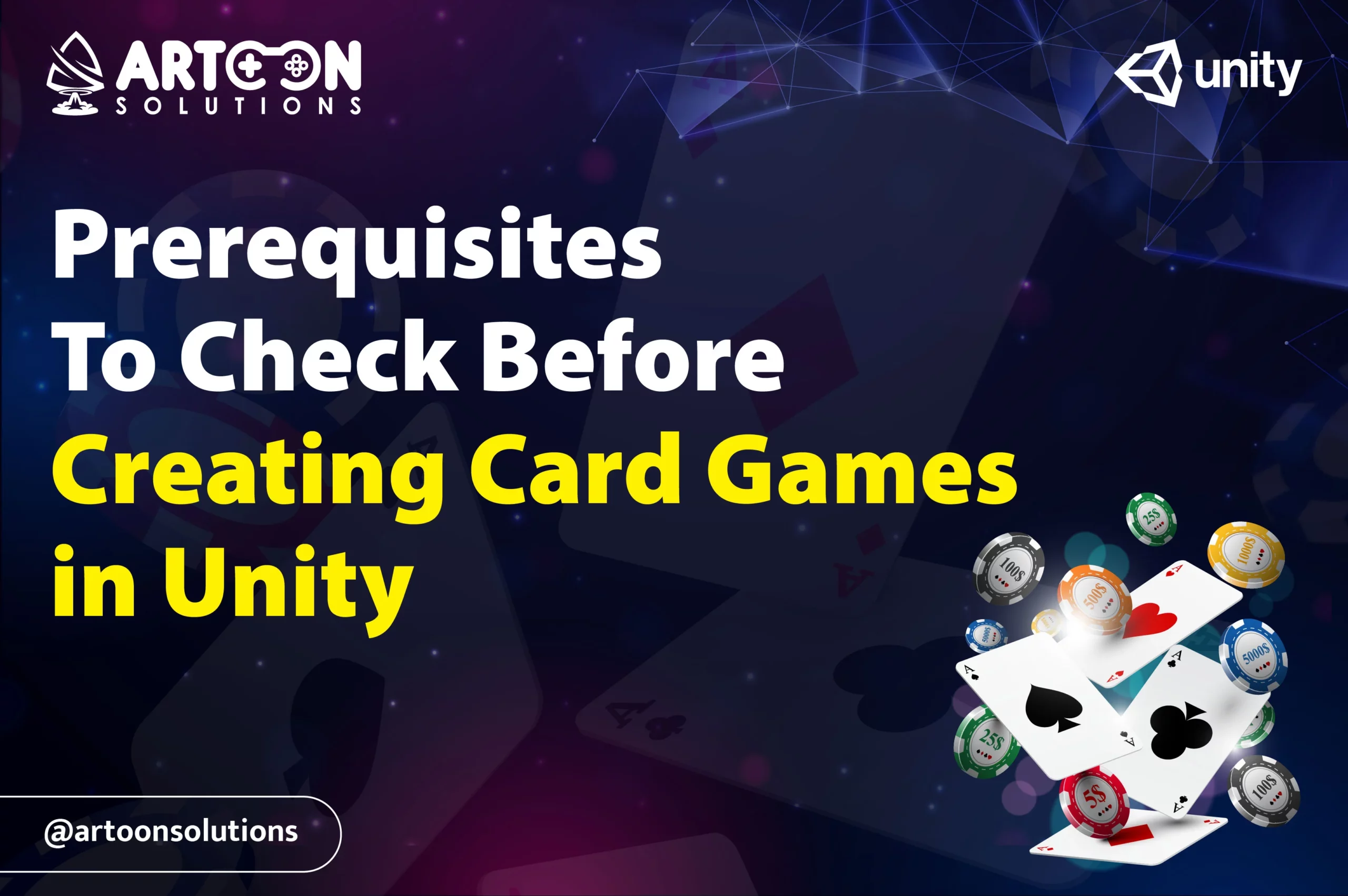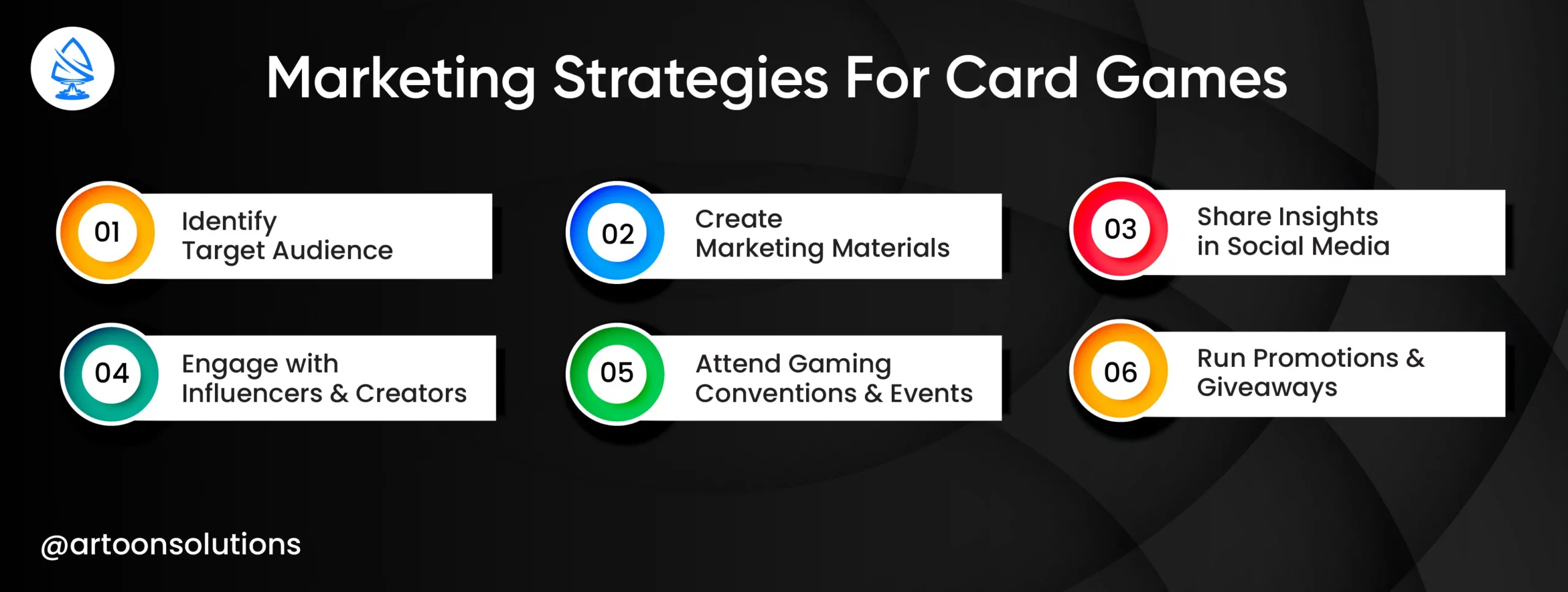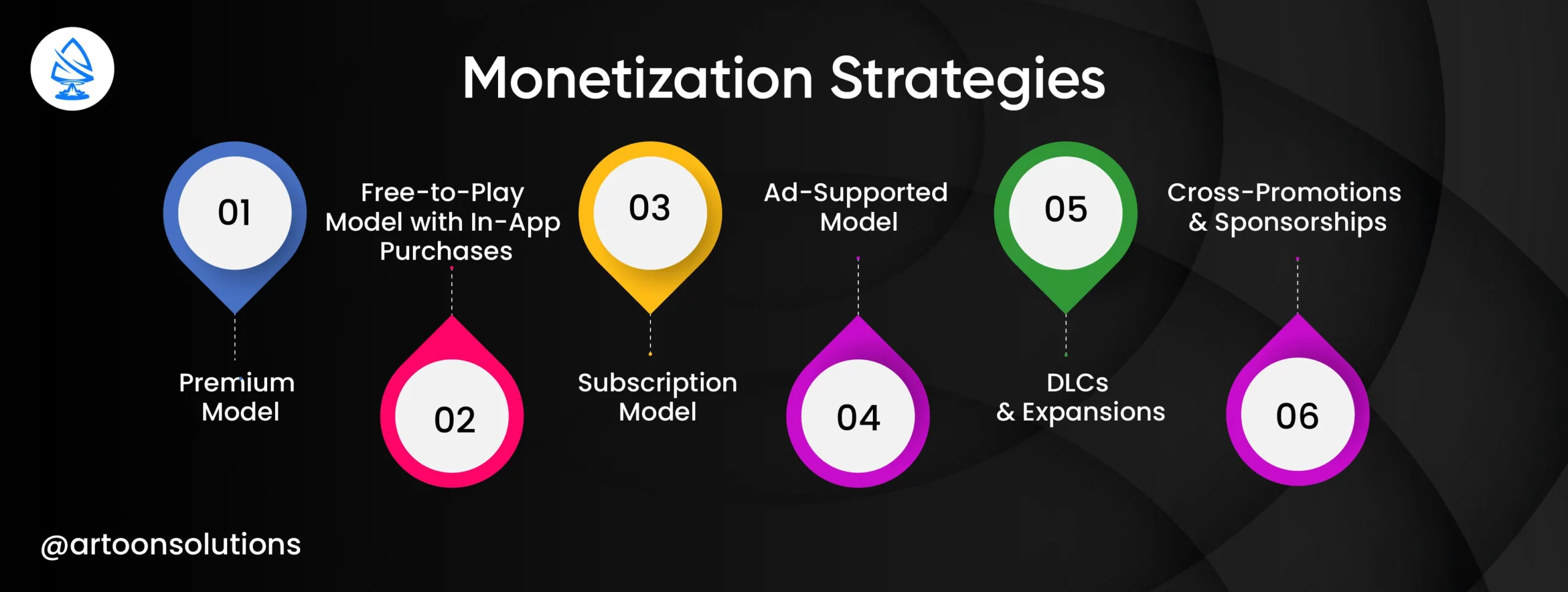- HR:+91-879-9184-787
- Sales:+91-908-163-7774

Are you a game developer looking to venture into the world of card games in Unity? Unity is a powerful game development platform that allows you to create stunning and engaging games, including card games. However, before you dive into the development process, there are several key prerequisites that you need to consider to ensure a successful and smooth development journey.
Before we dive into the prerequisites, let’s first understand what card games in Unity are all about. Card games are a popular genre in the gaming industry, known for their strategic gameplay and engaging mechanics. Unity, a leading game development platform, offers a wide range of tools and features that make it ideal for creating card games with stunning visuals and seamless interactions.
In this article, we will explore the essential steps and requirements you should check before creating card games in Unity.
To create a successful card game in Unity, it is crucial to have a solid understanding of the Unity platform and its capabilities. Unity is a gaming engine that supports 2D and 3D game development, which makes it suitable for a wide range of game genres, including card games. Understand Unity’s interface, tools, and scripting languages like C# effectively to develop your card game.
If you are wondering how to create a card game, hold on. In this article, we will focus on prerequisites that play a vital role in game development. It helps streamline the development workflow and ensures you have all the necessary resources at your disposal. By checking and fulfilling the prerequisites before starting the development, you can save time, avoid potential roadblocks, and create a more polished and professional card game.
So, here are the prerequisites you need to consider before creating card games in Unity.
At the heart of your development arsenal lies Unity itself – a powerful game engine that empowers developers to bring their creative visions to life. Whether you’re a seasoned developer or a beginner, Unity provides a user-friendly interface and rich features that make game development accessible to all.
In Unity, you’ll need a proficient code editor to write and debug scripts efficiently. Visual Studio and JetBrains Rider are popular choices among Unity card game developers for their robust features and seamless integration with the Unity Editor. These code editors provide essential functionalities such as syntax highlighting, code completion, and debugging tools, making the coding process smoother and more productive.
Furthermore, consider augmenting your toolkit with specialized software for asset creation. Graphic design tools such as Adobe Photoshop or Illustrator are invaluable for crafting stunning card artwork. Animation software like Adobe Animate or Spine can bring your game to life with animations.
Unity’s user-friendly interface and robust features make it the go-to choice for Unity card game developers worldwide. By understanding Unity’s environment and workflows, the process of developing a card game becomes smoother and more efficient.
Unity’s interface is composed of various panels and windows, each serving a distinct purpose. The Scene view provides a visual representation of your game world which enables you to position and manipulate game objects with ease. The Hierarchy panel organizes these objects hierarchically, providing a clear overview of your scene’s structure. Meanwhile, the Inspector panel offers controls for adjusting the properties of selected objects, from transform values to material settings.
The Project panel serves as your hub for asset management. It allows you to import, organize, and access game assets such as textures, models, and scripts. Unity’s Asset Store provides a vast library of assets, ranging from free resources to premium content. Also, Unity’s built-in documentation, tutorials, and online community and support help to navigate Unity’s environment and workflows effectively.
Unity provides a large platform for game development. Starting with a template can significantly streamline the process and provide a solid foundation for your project. With a variety of templates available in the Unity Asset Store, it’s essential to select the template that best suits your needs.
To select a template, consider the genre and mechanics of your card game. Are you creating a traditional card game like Rummy, Poker, or Solitaire, or are you exploring innovative mechanics and gameplay features? Look for templates that align with your game’s genre and offer the necessary functionality to bring your vision to life. Pay attention to features such as card handling, shuffling, dealing, and player interactions to ensure the template meets your requirements.
Furthermore, consider the level of customization and flexibility offered by the template. While a template can provide a head start on development, it’s essential to choose one that allows you to customize and expand upon its features to suit your unique needs. Look for templates that provide well-documented code, modular architecture, and support for adding new features and mechanics.
Game mechanics are the fundamental systems and interactions that drive player engagement and interaction, while rules establish the structure and boundaries within which players operate. By carefully designing these elements, you can create a cohesive and compelling gameplay experience that acquires players and keeps them coming back for more.
Start by defining the core mechanics of your card game. Consider what actions players can take, how they interact with the game world, and what goals they’re working towards. Whether it’s collecting sets of cards, strategically playing cards to outmaneuver opponents, or managing resources to achieve victory, the core mechanics should be intuitive, engaging, and aligned with your game’s overall theme and objectives.
Next, establish the rules that govern gameplay, including win conditions, player actions, turn structure, and any special abilities or effects associated with cards. Clarify how players acquire and use cards, how they score points or achieve victory, and any restrictions or limitations they must adhere to during gameplay. It’s essential to balance the simplicity and depth of the game. It will ensure that the rules are easy to understand while still providing strategic depth and replayability.
One of the most crucial steps in the process of creating a card game in Unity is creating and importing game assets. Game assets include everything from card artwork and designs to sound effects and animations, and they play a vital role in shaping the visual and auditory experience of your game.
Start by conceptualizing the visual style and aesthetic of your card game. Consider the theme, setting, and tone you want to convey and brainstorm ideas for card designs, characters, backgrounds, and other visual elements. Whether you’re aiming for a minimalist and sleek design or a vibrant and colorful aesthetic, ensure that your artwork aligns with your game’s overall vision and objectives.
Once you have a clear vision for your game’s visual style, begin creating the necessary assets using graphic design software such as Adobe Photoshop or Illustrator. Design card templates, character portraits, background images, and any other graphical elements required for your game. Pay attention to details such as color schemes, typography, and composition to ensure that your assets are visually appealing and cohesive.
Once you’ve designed the mechanics and rules of your card game, the next step is to implement the game logic and interactions in Unity. Game logic refers to the underlying systems and algorithms that govern gameplay, while interactions encompass the various ways players interact with the game world and each other. By translating your design concepts into functional code, you can bring your card game to life and create an immersive and engaging player experience.
To implement game logic, break down your game mechanics and rules into discrete components and systems. Identify key gameplay elements like card management, player turns, card interactions, and win conditions. Develop a plan to implement each one. Use object-oriented programming (OOP) concepts to organize your code into reusable and modular components. This approach will promote code maintainability and scalability.
Now, initiate coding to implement the game logic and interactions in Unity using C# or Unity’s visual scripting tool, Bolt. Use scripts to define the behavior of game objects, handle player input, and manage game states and transitions. For example, you might write scripts to manage the deck of cards, handle card interactions such as drawing, playing, and discarding cards, and enforce the rules of the game.
As you implement game logic and interactions, be mindful of best practices for coding and development. Write clean, well-structured code that is easy to understand and maintain. Use meaningful variable names and comments to document your code effectively. Test your scripts regularly to ensure they function as intended. Debug any issues or errors that arise along the way.
Enhancing your card game with visual effects and audio elements is a crucial step in creating an immersive and engaging player experience. Visual effects and audio cues can bring your game to life, evoke emotions, and create a sense of immersion that engages players and increases reach.
Then, explore Unity’s built-in particle system and animation tools to create visual effects that complement your game’s theme and mechanics. Experiment with particle emitters, shaders, and animations to add movement, depth, and texture to your game world. Whether it’s shimmering card effects, dynamic card transitions, or atmospheric particle effects, visual effects can add a layer of polish and excitement to your card game.
In addition to visual effects, audio elements like sound effects and music can enhance immersion and atmosphere in your card game. Use sound effects to provide feedback on player actions, such as card draws, plays, and victories. This helps create a sense of ambiance and excitement. Include background music that sets the mood and tone of your game. Choose relaxing melodies for casual gameplay and epic orchestral scores for intense battles.
Optimizing performance is a critical aspect of developing any Unity game, including card games. Performance optimization ensures that your game runs smoothly, efficiently utilizes hardware resources, and provides a seamless and enjoyable experience for players across various devices and platforms.
To optimize performance, identify performance bottlenecks and areas for improvement. Unity’s built-in profiling tools, such as the Profiler window and Performance Reporting, provide valuable insights into your game’s performance metrics, including CPU usage, GPU usage, memory consumption, and frame rate. Analyze the profiler data to pinpoint areas of concern and prioritize optimization efforts based on their impact on gameplay and user experience.
One of the most effective optimization techniques for Unity games is to minimize the number of draw calls and batched objects rendered on screen. Reduce the complexity of your card game’s scenes by optimizing the rendering pipeline. Use efficient shaders and materials. Minimize overdrawing and unnecessary rendering. Implement object pooling to reuse and recycle game objects. This will reduce the overhead of object instantiation and destruction during gameplay.
Testing and debugging are crucial steps in the development process of any card game in Unity. Thorough testing ensures that your game functions as intended is free from bugs and glitches, and provides an enjoyable and satisfying experience for players. By identifying and resolving issues early in the development process, you can save time and effort and create a more polished and professional final product.
Test cases can be initiated by doing comprehensive playtesting sessions to evaluate the gameplay experience from the perspective of the player. Opt for playtesting in different devices and OS. Check aspects such as game mechanics, controls, user interface, and overall enjoyment. Observe how your game is performing on each device, take note of any issues or areas for improvement, and iterate on your design and implementation accordingly. Use Unity’s built-in debugging tools, including the console, debug logs, and breakpoints, to diagnose and fix errors efficiently.
Consider implementing automated testing techniques such as unit tests and integration tests to validate the functionality of individual components and systems within your card game. Unit tests, for instance, verify the behavior of specific functions and methods in isolation. On the other hand, integration tests assess the interaction and integration of multiple components within the game. Consequently, by using both types of tests, you can ensure a more robust and reliable gaming experience. By incorporating automated testing into your development process, you can identify and address issues early. This helps maintain the stability and reliability of your game throughout development.
Publishing your card game in Unity involves several steps, from preparing your game for distribution to selecting the right platforms and distribution channels to reach your target audience.
Prepare your card game for distribution by building it for various platforms supported by Unity, such as PCs, mobile devices, and web browsers. Unity’s Build Settings allow you to specify the target platform and build settings for your game, including resolution, aspect ratio, and optimization settings. Ensure that your game is optimized for each platform to provide the best possible experience for players on different devices.
Then, consider the distribution channels and platforms where you want to publish your card game. Unity provides several options for distributing your game, including app stores, online platforms, and standalone websites. Research the requirements and guidelines for each distribution channel. Look into their submission processes, content restrictions, and revenue-sharing models. Choose the channels that best fit your game and target audience.
When preparing to publish your card game, ensure compliance with legal and regulatory requirements. This includes copyright and intellectual property laws, age ratings, and privacy policies. Review Unity’s publishing guidelines as well as platform-specific guidelines. Ensure that your game meets all requirements and is eligible for distribution on your chosen platforms.
Gamemaker vs Unity: Differences, Features, Pros and Cons
To maximize the success of your card game, invest time and effort in marketing and monetization strategies. Promote your game through social media, influencers, press releases, and game forums to generate buzz and attract players. Explore different monetization models like in-app purchases, ads, or premium subscriptions to generate revenue from your game.
Let’s understand this briefly.


Creating card games in Unity is a rewarding and fulfilling endeavor that allows you to unleash your creativity and passion for game development. By following the essential prerequisites mentioned in this article, you can create successful card games and bring your game ideas to life.
So, what are your thoughts? Interested in creating a card game? If so, you’ve come to the right place! Artoon Solutions, one of the leading Unity Gaming Services globally, has a successful track record in card game development. Hire Unity developers from Artoon now and elevate your gaming innovation to new heights.
While prior game development experience can be beneficial, Unity offers a user-friendly interface and extensive documentation that can help beginners create card games with relative ease.
Hiring Unity developers can be advantageous if you need specialized expertise or assistance with complex game features. However, with dedication and learning resources, you can develop a card game on your own.
Some common challenges include balancing game mechanics, optimizing performance, debugging errors, and designing engaging gameplay that keeps players entertained.
Yes, Unity is a versatile platform that supports both 2D and 3D game development, making it suitable for creating a wide range of card games with varying visual styles.
To enhance the replay value of your card game, consider adding diverse game modes, challenges, achievements, leaderboards, and regular content updates to keep players engaged and coming back for more.